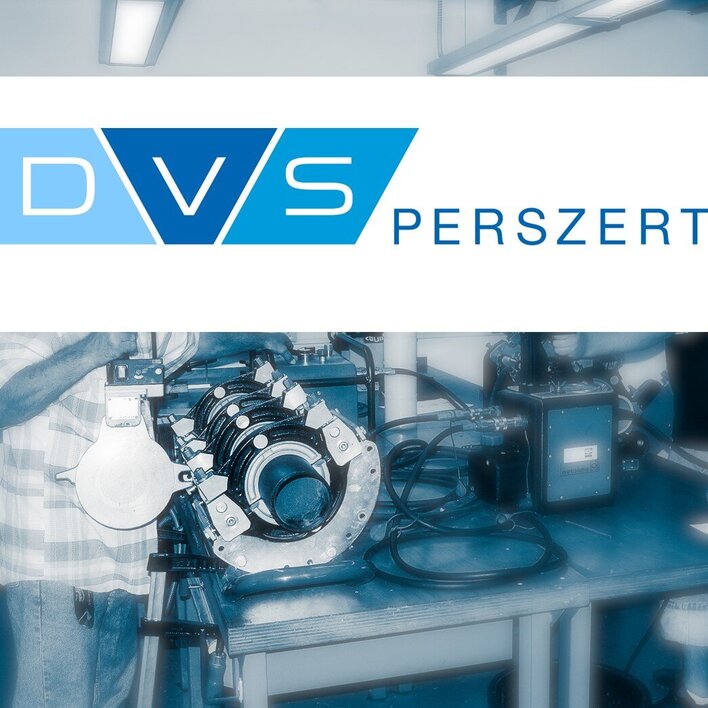The connection is what it makes
Plastic welding
Whether for the production of classic plastic welded joints or hybrid assemblies by riveting or flanging, the joint makes it!
We have the expert knowledge of all common plastic welding processes. The focus is always on independent consulting for the selection of a suitable welding process for your problem. We are your competent partner for weldability studies, technology optimizations with failure analysis, investigations of weld specimens with regard to their mechanical and morphological properties, and the development of new welding technologies.
- Hot plate welding
In hot plate welding, the joining surfaces are plasticized by direct contact with a heating element at a defined temperature (equalization). After a subsequent heating phase (almost pressureless), during which a defined melt layer is produced, the molded parts are welded with a defined joining pressure. To prevent melt adhesion, the heating elements are coated with a PTFE layer. The heating element must be switched between the heating and joining process phases. Therefore, this is a multi-stage process.
The direct contact of the joining surfaces with the heating element allows shape part tolerances to be compensated. In addition, the process has a high degree of flexibility in terms of feasible component sizes and materials and can be automated very well. Disadvantages are the comparatively high energy costs and the long cycle times. The use of PTFE-coated heating elements severely restricts the range of materials that can be welded with this process due to the continuous operating temperature of PTFE.
- Infrared welding
In infrared welding, heat is applied to the joining surfaces of the molded parts to be welded without contact via thermal or infrared radiation. The process sequence is comparable to that of hot plate welding, but the non-contact heating means that there is no adjustment phase. As a result, it is not possible to compensate for part tolerances with this process. In addition, the emission spectrum of the emitter must be matched to the absorption spectrum of the plastic. Infrared emitters are also individually designed and developed for each application to be welded.
With this process, many thermoplastics can be welded particle-free to a very high quality. These can also have very complex geometries. There are restrictions on weldability, for example, if the plastics have a very high carbon black content.
In addition, the process is very sensitive to changing environmental or ambient influences. The process times are comparable with those of hot plate welding.
- Ultrasonic welding
The ultrasonic welding process is one of the friction welding processes. Before the actual welding process starts, an ultrasonic generator transforms the energy supplied from the power grid at 50 Hz to typical ultrasonic frequencies of 20, 30, 35 or 40 kHz. An ultrasonic converter converts these high-frequency electrical vibrations into mechanical vibrations at the same frequency based on the reverse piezoelectric effect. The vibration energy is transmitted to the molded parts to be welded by a sonotrode adapted to the respective molded part. The entire vibration system, consisting of converter, booster and sonotrode, operates at resonant frequency. To ensure that the oscillation energy can be introduced in a targeted manner, the moldings must have a special joining zone geometry in the form of an energy direction generator.
The heating of the joining surfaces up to plasticization is achieved by internal and external absorption of the mechanical vibrations. The simultaneously applied joining pressure causes the plasticized material of both molded parts to flow into each other.
The ultrasonic welding process is characterized by very short process times (< 1 second), high energy efficiency and a very high degree of automation. However, it is only suitable for small to medium-sized molded parts, releases particles and can damage vibration-sensitive components (electronics).
- Vibration welding
Vibration welding is a friction welding process. In this process, the molded parts to be welded are moved horizontally in relation to each other under a defined joining pressure and a material-dependent amplitude. The amplitude is transmitted by a vibration head. This contains electromagnets, oscillating masses and a spring assembly. A tool holder for one half of the molded part is attached to the oscillating head. All components of the oscillating head form a resonance system which must be tuned to the corresponding working frequency (190 - 240 Hz).
The friction mechanism generates heat, which leads to plasticization of the plastics to be welded within a defined zone. Before a melt layer is formed, dry friction effects take place, which can lead to strong particle formation. The process is characterized by short process times (in the seconds range) and very high weld seam qualities that can be achieved. Vibration-sensitive molded parts (e.g. with electronic components) can be damaged by the high vibration load. Very soft plastics are also not suitable for this process, as they absorb the vibrations and make plasticizing more difficult or prevent it.
Our services in plastic welding in detail
Our machine equipment at a glance
20 kHz
4 x pneumatic ultrasonic welding machine
BRANSON
Combi 20 kHz / 40 kHz
pneumatic ultrasonic welding machine
BRANSON
SonTOP Genisis 20 kHz
servo electric ultrasonic welding machine
MS Ultrasound
USMNB trainer servo
Micro Ultrasonic Riveting Machine
KUZ Leipzig / BRANSON
sonxTOP Genisis
Ultrasonic riveting test rig (AI-supported)
KUZ Leipzig / MS Ultrasound
Ultrasound supported
Heating element welding machine
KUZ Leipzig / BRANSON
IR/HP60/40Si servo
IR welding machine
BRANSON
2406 100
pneumatic vibration welding machine
BRANSON
linearly driven
Foil welding machine (concept)
KUZ Leipzig
DVS TESTING PLACE
Manual welding
For plastic connections in the craft sector, you need an approval test according to DVS guidelines. The Kunststoff-Zentrum, as a recognized DVS training and testing center, supports you in selecting the required initial or repeat test



















 "/>
"/>